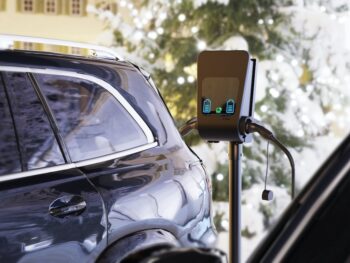Ten steps to support electric car conversions in the UK
The switch to electric vehicles on UK roads could be accelerated by encouraging and enabling widescale conversion of petrol and diesel cars, according to Ctek.
 The EV charge point manufacturer, which operates across Europe, says that the government in its home country of Sweden is looking seriously at measures, while existing subsidies and a supportive regulatory framework in France has encouraged Renault to become active in conversion.
The EV charge point manufacturer, which operates across Europe, says that the government in its home country of Sweden is looking seriously at measures, while existing subsidies and a supportive regulatory framework in France has encouraged Renault to become active in conversion.
Daniel Forsberg, marketing manager EVSE, said: “Converting older ICE vehicles to electric power makes environmental sense – the millions of ICE cars on the road embody a huge amount of material resources and manufacturing manpower and energy costs.
“A future in which tens of millions of ICE cars are all scrapped would be a tremendous waste of money, materials and the carbon dioxide already emitted during their making. And manufacturing a new EV involves a large carbon cost.”
CTEK is now urging action in the UK to help bring electric car conversions into the mainstream – and has issued a 10-point plan to make the process simpler and more affordable.
Forsberg outlined: “Converting ICE cars to electric is entirely feasible, indeed the UK is already home to a growing number of boutique automotive businesses focused on these transformations. They often turn classic cars and vans into EVs, yet the principles are the same for more modern vehicles.
“Currently, conversions are expensive, which is one reason classic car owners are the main customer base. They often have the finances to pay for it and the incentive of wanting to give a cherished vehicle a fossil fuel-free future.
“To bring this option to the masses, drivers need incentivising and auto businesses need to be attracted to offer an affordable conversion service by making the process simpler.
“The UK has a strong automotive industry with many skilled employees who can develop methods and processes to implement electric conversion in a cost-effective and environmentally conscious way.”
CTEK’s 10-point plan for enabling ICE to EV conversions
- Simplify re-registrations: create a simplified process for re-registering vehicles that have been converted to electric power. This should include a specific registration category for electrically converted vehicles.
- Standardise requirements: introduce standardised requirements for electric vehicle conversion that are clear and easy to follow.
- Subsidise: offer financial incentives or subsidies to individuals and companies that choose to electrify their vehicles. This can reduce initial costs and make it more attractive to convert.
- Training: offer training courses for mechanics who want to specialise in EV conversion.
- Simplify inspection: create a specific inspection process for electrically converted vehicles.
- Provide technical support: establish a national technical support centre where individuals and businesses can get advice and guidance.
- Support R&D: invest in developing conversion technologies to reduce costs and improve efficiency.
- Publicise: run information campaigns to raise awareness of the benefits of electric vehicle conversion and how the process works.
- Co-operate: Encourage co-operation between authorities, the automotive industry and third-party suppliers to develop and promote electricity conversion solutions.
- Eco-friendly loans: Work with financial institutions to offer special low-interest loans for those who want to electrify their vehicles.
Daniel Forsberg finished: “The UK has many reasons to incentivise the conversion of older cars to electric power – environmental, economic and employment.
“Imagine if some of the most numerous petrol and diesel cars on UK roads, such as Ford Fiestas and VW Golfs, could be cheaply converted to electric. That would be a real gamechanger on the UK’s drive to its EV future.”













Leave a comment